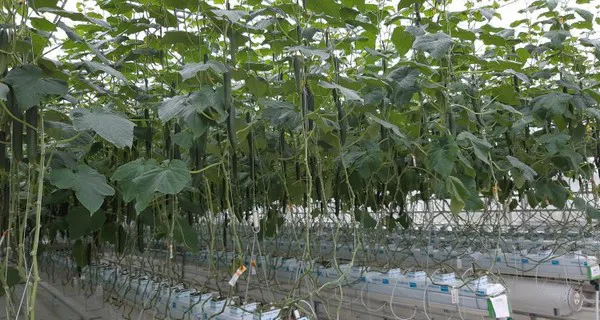The Winterlight Greenhouse is a new type of greenhouse. Compared to the Venlo greenhouse, the crop receives 10% more light in the winter months. As a result, less energy is needed to achieve good production. The Greenhouse Horticulture Business Unit of Wageningen University & Research is investigating whether less CO2 can to be applied in the greenhouse for good production.
A few years ago, the Winterlight Greenhouse was built at the WUR research location in Bleiswijk. The greenhouse (of 500 m2) has diffuse glass that becomes clear with condensation. As a result, the irradiation in winter is high compared to traditional greenhouse types. In the summer - when the sun shines a lot anyway - the radiation decreases. With the Winterlight Greenhouse, energy can be saved up to tens of percent, according to previous tests with tomatoes and cucumbers, among others.

In April 2021, a study started into the possibilities of limited CO2 dosing in cucumber cultivation in the Winterlight Greenhouse. The aim in this trial is to dose one-third of the usual amount of CO2, or a maximum of 10 kilograms of CO2 in a growing season of six months. By dosing less CO2, growers can prepare for the reduced availability of fossil fuels.
During the study, a maximum of 60 grams of CO2 per m2 per day is dosed daily. The first results show that the crop responds well to it. It is important here that the start of the summer of 2021 is reasonably cool, so that less ventilation is required (and therefore less CO2 can escape from the greenhouse).
The research is being conducted with three cucumber varieties. These have been selected for their tolerance to mildew. The WUR is also investigating whether a possible outbreak of powdery mildew can be prevented and controlled with a preventive policy and green plant protection products.
 For more information:
For more information:
Wageningen University & Research
www.wur.nl
